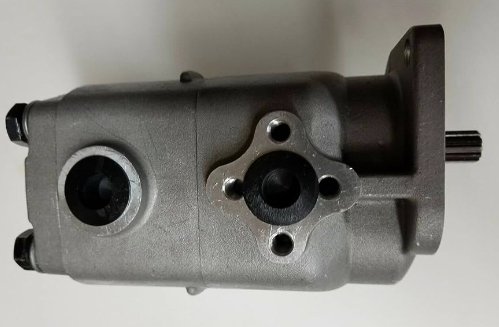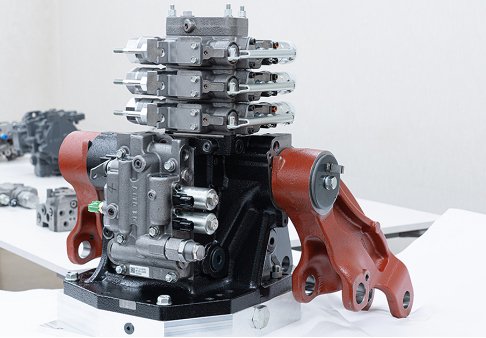Were you having trouble with your Kubota hydraulics? Our step-by-step guide can help you diagnose and solve your Kubota Hydraulics Not Working issues quickly and efficiently. Learn how to identify the root of the problem, pinpoint the cause, and get your machine back to optimal performance. With our expert advice and troubleshooting tips, you can get your hydraulics up and running again quickly.
ð¥See also: Kubota Tractor Clutch Problems
Diagnosing and Solving Your Kubota Hydraulics Not Working Issues

Whether you’re an experienced mechanic or a DIY enthusiast, analyzing and solving problems with Kubota hydraulics can be tricky. Fortunately, our step-by-step guide provides an easy and comprehensive breakdown of the process, helping you troubleshoot and fix your Kubota Hydraulics Not Working issues.
Learn how to identify the root of the problem, pinpoint the cause, and get your machine back to optimal performance. From diagnosing the issue to understanding your Kubota machine’s different components and corresponding functions, our guide provides all the necessary information to get your hydraulics back on track. With our expert advice and troubleshooting tips, you can get your hydraulics up and running again quickly.
| Component | Function | Troubleshooting Tips |
|---|---|---|
| Pump | Supplies hydraulic fluid to the hydraulic system. | Check if the fluid level is adequate, look for signs of wear and tear, and ensure the pump is in good working condition. |
| Accumulator | Stores and accumulates hydraulic fluid. | Check for signs of corrosion, leaks, and blockages in the accumulator. |
| Valve Block | Controls the flow of the hydraulic fluid. | Inspect the valves for signs of wear and tear and ensure they function correctly. |
Diagnosing the Problem
When your Kubota hydraulics are not working, the first step is to diagnose the problem. First, inspect the hydraulic system for any visible signs of damage or wear. Check for loose, damaged, or corroded hoses and connections and any signs of leaking fluid. If the fluid is low, check the reservoir tank and fill it to the correct level. Also, determine if your machine has an air filter; if so, clean it or replace it if it is clogged or contaminated.
Checking the Hydraulic Fittings
If the machine’s hydraulic fittings are not functioning correctly, they must be checked. First, check the pressure relief valve to ensure it is open and allows fluid to move through the system. Then, check the hydraulic hoses, filters, and fittings for any signs of damage or obstructions. If any of these components are damaged or clogged, they must be replaced or repaired.
Testing the System
Once the hydraulic fittings have been inspected and any necessary repairs or replacements have been made, it is time to test the system. To do this, run the machine in its normal operating mode and check for any signs of abnormal behavior. A more thorough inspection may be necessary if the device is not performing as expected. Additionally, it is essential to check the hydraulic fluid’s flow rate to ensure it is running at the correct speed.
ð¨You may be interested in: Kubota L4701 Problems
Adjusting the Pressure
If the flow rate is not running as expected, it may be necessary to adjust the pressure of the hydraulic system. To do this, use a gauge to measure the system’s pressure. Adjust the pressure downward to the correct level if the pressure is too high. If the pressure is too low, adjust it upward until it is at the right level. Once the pressure is adjusted, retest the system to ensure it functions properly.
Kubota Hydraulics Not Working can be frustrating, but with the proper guidance and troubleshooting tips, it can be quickly identified and resolved. Following these simple steps, you can quickly get your Kubota machine back to optimal performance.
Key Takeaways for Diagnosing and Fixing Kubota Hydraulics Not Working Issues
- Identify the root of the problem and inspect the hydraulic system for any visible signs of damage, wear, or corrosion.
- Check the pressure relief valve, hydraulic hoses, filters, and fittings for any signs of damage, leaks, or blockages.
- Run the machine in its normal operating mode and check for any signs of abnormal behavior.
- Use a pressure gauge to measure the system’s pressure and adjust it to the correct level if necessary.
- Retest the system to ensure it is functioning correctly.
Finding Success with Kubota Hydraulics Troubleshooting
Kubota hydraulics not working can be challenging, but with proper guidance and troubleshooting tips, it can be quickly identified and resolved. By following these steps, you can quickly get your Kubota machine back in optimal working order. Whether you are a novice or a professional mechanic, these tips can help you diagnose and repair any hydraulic problems you may be experiencing. With the right knowledge and tools, you can troubleshoot Kubota hydraulics efficiently and effectively, ensuring your machine runs smoothly and reliably.
â¡ï¸Another article: Kubota Mx5400 Problems
